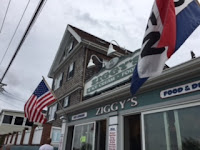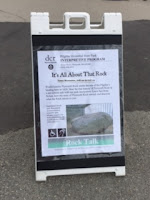by
Paula Gail Benson
Growing
up, I remember hearing the story of the Pilgrims coming to Plymouth Rock during
this time of year. I would help my mother pin paper figures of early settlers,
Native Americans, turkeys, and autumn leaves on her first grade classroom
bulletin boards. The effect was very much like the images we would see on
Thanksgiving morning when we turned on the Macy’s parade and watched the giant
bird and Pilgrim head floats wheeling down 34th Street.
This
year, I’ve had my eyes opened about a few “traditional” Thanksgiving ideas.
While
in a doctor’s waiting room this summer, I picked up the November 2014 issue of Highlights for Children and read a short
story about a contemporary young girl trying to convince her parents to prepare
a Thanksgiving dinner like the first feast. The family quickly realized the
idea was impractical in that several favorite dishes (like pie, cranberries,
and potatoes) would be missing and that others would be difficult, if not
impossible, to obtain (lobster, eel, partridge, and–horrors!–eagle).
Also during
the summer, I went to Boston on a business trip and spent a few extra days
touring the surrounding area. One of my trips took me to Plymouth, a seaside
village that boasts a replica of the Mayflower (the Mayflower II) and the
remaining rock itself.
 Unfortunately,
our group did not have the chance to see the Mayflower II because the
reproduction had been taken to Mystic Seaport where it was being restored for
viewing by Queen Elizabeth II and many others during the 400 anniversary of the
original’s sailing in 1620 (to take place in 2020). We did have lunch and the opportunity to explore a
charming village filled with delightful tourist attractions. I enjoyed clam
chowder and ice cream at Ziggy’s, which had been operating in the same spot at
120 Water Street since the 1960’s. While sitting at a corner table, I heard customers
comment that they came back to Ziggy’s every summer.
Unfortunately,
our group did not have the chance to see the Mayflower II because the
reproduction had been taken to Mystic Seaport where it was being restored for
viewing by Queen Elizabeth II and many others during the 400 anniversary of the
original’s sailing in 1620 (to take place in 2020). We did have lunch and the opportunity to explore a
charming village filled with delightful tourist attractions. I enjoyed clam
chowder and ice cream at Ziggy’s, which had been operating in the same spot at
120 Water Street since the 1960’s. While sitting at a corner table, I heard customers
comment that they came back to Ziggy’s every summer.
Further
down the street, a stone portico sheltered “Plymouth Rock.”
In
my imagination, a massive boulder represented the place where the Pilgrims
first walked. Surely, it must look like Henry A. Bacon’s painting, The Landing of the Pilgrims.
Well,
perhaps it did once. But, in 1774, the townspeople of Plymouth decided to move
the rock, which resulted in it being split into two portions. The top part
moved to various locations around Plymouth and eventually had the date 1620
inscribed in it. You can read about its journeys in Wikipedia (https://en.wikipedia.org/wiki/Plymouth_Rock) and Trip Savvy (https://www.tripsavvy.com/visit-the-plymouth-rock-1599133).
Our
bus driver had warned us not to expect too much when we went to view the rock. The
canopy seemed a bit grand when we stared at the portion of granite that had
been preserved. Yet, as I listened to the officer quietly tell the story and
gazed down at a small, yet inspirational part of the American heritage, I could
sense a connection with the band of travelers seeking religious freedom on a
distant shore.
There
was one other connection that made me seek out the rock. The first short story
I ever completed was written in a spiral notebook my aunt had given me. I wrote
it on a Thanksgiving Day during my childhood. That story was about a young
Pilgrim girl, probably about my age, who had survived the devastating winter
with her father, but had lost her beloved brother. As she helped to prepare the
feast, she wondered whether the struggle had been worth the cost. Finally, she
happened to hear her father in prayer, expressing thanks to still have her and
pride in all that she had accomplished. Her father’s words renewed her resolve
to continue to face the challenges in the new world.
So,
when I had the opportunity to gaze upon that small chunk of remaining Plymouth
Rock, I remembered the child I had been who wrote her first story and believed
that she would write others. In the same way Plymouth Rock makes us grateful
for those who came before us, I’m very thankful that its legacy helped me to
become a writer.
As we approach
Thanksgiving, what makes you grateful as a writer?
 |
| Plymouth Panorama from Wikipedia |




That's lovely, Paula. And how wonderful that you remember your first story.
ReplyDeleteI'm trying to digest the size of Plymouth Rock. Like you, I was expecting something grander.
As a writer, I'm grateful for the community of writers that I'm fortunate enough to be a part of. It's a hard profession and without the support and camaraderie of the group, it would be much harder.
Paula, I loved your wonderful memory! Thank you for sharing it and your trip with us. It is hard to forget the let-down of Plymouth Rock. I remember taking my kids to see it years ago and thinking, Is that it?
ReplyDeleteI'm grateful for the writing community and especially all of you! As Kait said, writing is a tough and solitary pursuit. I'm glad we're here to support each other.
I am thankful for support we give each other as writers and for the readers we write for.
ReplyDeleteWhen I was teaching a self-contained special education high school class, we had two major Thanksgiving projects. One was to fix a "traditional" Thanksgiving meal of a kind that "You, too, can produce this festive meal for your family, even if they've never had a Thanksgiving meal before." We went for likely-to-be-successful, like frozen pies, cylinders of canned cranberry jelly with the ridges down the sides, and baked potatoes.
ReplyDeleteThe other project we did was imagining we were travelling on the Mayflower to the new land. Given the limited space and the harsh reality approaching, what would we bring?
I was often proud when the kids decided that money would be useless (where would they spend it?) Also that seeds and pregnant goats were better than flour and meat.
Inevitably, though, someone would decide to include a TV, often specifying a small, battery-operated TV (there might not be any electricity) The idea of a world where TV broadcasts weren't just floating around there waiting to be plucked by the proper technology just didn't make sense to them.
Paula, this gave me an idea for my last blog of the year this Thursday, when I taught my third grade classes about the Pilgrims coming to America. I didn't see the rock when I went to Plymouth, but I was able to get on the replica of the Mayflower and to visit the reenactment village as well as the Indian village nearby. By the way, at that first Thanksgiving they had venison.
ReplyDeleteThanks, Kait. The actual rock is surprising, but it is preserved with respect. And, I agree, the community of authors is really sustaining.
ReplyDeleteShari, how wonderful to take your children. Plymouth is definitely a family friendly summer spot.
Shari, you and Warren are right, our partnership here is a real benefit for writing encouragement and inspiration.
KM, I love your projects and your students' analyses!
Gloria, you always inspire me, so I'm glad if this message gave you an idea! I visited the village also. It was a great learning experience.
I love using holidays in my writing, so that made it all the more wonderful to learn about your first short story, Paula.
ReplyDeleteAs to being grateful, I'm grateful that as writers we all have the ability to do something we love--craft stories--and, as a result, we also entertain and bring happiness to others. It's a win-win. Happy early Thanksgiving!
Paula is a gifted writer not only of short stories, books etc, she also writes original stage plays and musicals and directs them at her church. Her plays and music convey a happy message that the audience takes home with them to remember as they celebrate the Holidays.
ReplyDeleteBarb, I always love your holiday stories. And yes, isn't enjoying the writing craft wonderful?
ReplyDeleteAnonymous, you are very kind. It means a lot to me to think that my words might bring joy to others. Thank you.